#Treaty 9 territory
Photo

Nooooo!!! not the fry bread!!!
My ancestors weep.

2 notes
·
View notes
Text

A map of the galaxy in 9 ABY in @gabajoofs and my Star Wars timeline. By this point, the Galactic Civil War is considered by many to be effectively over, as the centralized Galactic Empire no longer exists, with only a handful of remnant factions remaining. The New Republic governs much of the galaxy, but their hegemony is not singular, and several other groups exist which are able to project power in the galaxy.
The factions which hold territory include:
The New Republic: After the Battle of Yavin, the Rebellion restructured itself into the New Republic, initially based on Chandrila. Over the next several years, the Republic waged a campaign against the fracturing Empire, securing the Galactic South and the Core before finally liberating Coruscant in 7 ABY. A series of escalating scandals brought down the leadership of Mon Mothma the following year, and she was succeeded in her role by Leia Organa, who pushed through governmental reforms and currently serves as the Republic's Chief of State, with Cal Omas as her Prime Minister. The Republic now sits at a crossroads, with several political factions vying to influence its destiny - including a right-wing political coalition led by Mon Mothma's daughter Leida.
The Pentastar Alignment: The largest and most successful of the post-Endor Imperial splinter states, the Pentastar Alignment, known in Republic space increasingly as simply the Imperial Remnant, controls most of the galaxy from Ord Mantell northwards. It has been so successful largely by avoiding conflict with the Republic and the Mandalorians, instead targeting smaller Imperial warlords including Warlord Zsinj. Pentastar has absorbed much of the remaining Imperial fleet and many of its greatest remaining military minds, including Grand Admirals Martio Batch and Gilad Pellaeon, the latter of whom acts as supreme commander of the Pentastar fleet. Governed from Bastion, the Pentastar Alignment is led by Ardus Kaine, former Grand Moff of Oversector Outer. Though he has taken the title of Legate in reference to military leaders of Bastion's ancient history, in all but name he is Emperor, and inspires great loyalty in his men.
Mando’ade Aliite be Te Anila Grat’ua Mand’alor (United Clans of Mandalore): After Endor, Death Watch veteran Vasili of clan Bev’miir, who had spent several years uniting the disparate Mandalorian clans, launched an assault on the Empire's holdings in Mandalorian space. After securing Mandalore, Bev'miir, now known as Mandalore the Uniter, waged war to expand Mandalorian space to historical heights, helping to crush the Warlord Zsinj and destroy the power base of the Hutts. Since securing the borders of Mandalorian space, Bev'miir has been content to rule his worlds in relative peace, reforming Mandalorian society and restoring the supremacy of the clans. He recently signed a treaty alongside Chief of State Organa in which the Republic recognized him as the legitimate representative of the Mandalorian people and his government's sovereignty over the worlds it controls.
The True Mandalorians: Supporters of Bo-Katan Kryze's claim to lead the Mandalorians, including her own Nite Owls and several smaller clans, united as the True Mandalorians and attempted to gain their own foothold to unite the Mandalorians. While the Republic recognized Kryze as the true leader of the Mandalorians and offered support, ultimately Kryze's forces were only able to secure Onderon's moon Dxun, losing the planet Jabiim to Bev'miir's faction. Now, languishing on the jungle moon, they have lost even republic recognition, and their future is uncertain.
The Hapes Consortium: The small, independent enclave of the matriarchal Hapans has gone unmolested since Endor. Chief of State Organa is planning a diplomatic mission in the hopes of bringing them into the Republic.
The Greater Maldrood: Treuten Teradoc's Imperial remnant, governed from Togoria, has been hit hard in the campaigns against Zsinj and the Mandalorians, and struggles to protect its remaining borders even with Grand Admiral Rae Sloane in command of its military. Reluctantly, Teradoc has opened annexation negotiations with the Pentastar Alignment.
The Neimoidian Socialist Confederation: After the election of socialist Thog Rutak as Trade Monarch, Neimoidian society was thrown into a civil war in which the socialists emerged victorious, and set about reforming Neimoidian society and nationalizing the Trade Federation. The confederation has grown to include much of the former Corporate Sector after its own socialist revolution, and is aligned with the Republic as an independent affiliated observer state.
Zakuul Space: The ancient worlds of Zakuul and Iokath have remained uncontacted for centuries, and some say they no longer exist. Others insist that they are out there, filled with riches and waiting to be plundered.
The Chiss Ascendancy: In the Unknown Regions, the Chiss control their territory and watch for threats known only to them. They have not established relations with the Republic.
The New Confederacy of Independent Systems: After Endor, rather than joining the New Republic, a group of former Separatist worlds, led by Magisterial Porro Linn of Balan-Quod and mainly from the Tion Cluster, formed a revival of the CIS. They have received little support, and have not normalized relations with teh Republic.
The Proto-Sith: A number of dark side factions, including the Knights of Ren, the Prophets of the Dark Side, the Lost Tribe, elements of the Reborn and the Inquisition, and the Sorcerers of Tund have gathered in what was once Sith Space and the Centrality. The Rule of Two died with Palpatine and Vader at Endor, and it is time once again for the Sith to cheat death...
Black Sun, the Iron Triad, the Exchange, et al.: In the wake of Endor and the decimation of the Hutts, organized crime has grown in power. Several worlds in the Galactic south and former Hutt Space are now openly run by crime organizations, in particular the Iron Triad, founded by former Imperial officer Ubrik Adelhard, which is based on Klatooine. After the death of Prince Xizor, the leadership of Black Sun remains unclear.
The Central Committee of Grand Moffs: A small group of Grand Moffs working in concert with Supreme Slavelord Trioculus of Kessel - who claims to be the Emperor's son - has monopolized the spice trade with a small fleet of Imperial ships, conquering the Pyke Syndicate and incorporating it into their own operations. They are considered of least concern to the Republic.
Hutt Space: Campaigns by the Mandalorians and Iron Triad, and a revolt of the Evocii on what was once Nal Hutta, have destroyed most of the Hutts' power in the galaxy. Individual crimelords such as Dertykop of Taris or Teemo of Tatooine still exert power, but the Ruling Council has retreated to Varl and the Bootana Hutta, and only a sliver of Hutt Space remains.
The Imperial Royalist Confederation: After Ysanne Isard launched a coup in late 4 ABY, Sate Pestage and Mas Amedda fled Coruscant for the fortified Deep Core, where they set up their own government on the Emperor's throneworld of Byss. There Amedda rules as Imperial Regent, surrounded by sycophants, and the Republic is content to let him stew.
Other factions which hold no territory but still have a measure of influence in the galaxy include:
Moff Royen's Imperial Remnant: A small fleet of ships which remains independent of the other major Imperial remnants, mainly patrolling the Red Hand Cluster.
The New Jedi Order: After a quest of several years to uncover secrets of the Force and find Force-sensitive recruits, Luke Skywalker, now a Jedi Master, has reformed the Jedi Order, heading the new Jedi Council. The location of his temple is a closely-held secret, with rumors placing it anywhere from Yavin to Ossus to Tython to the mythical world of Tanalorr.
The Children of Ghorman: The Republic Commision for the Prosecution of War Crimes and Crimes against Civilization was established in 6 ABY for the prosecution of Imperial war criminals. Valarr Ulgo, an Alderaanian former ISB officer and member of Republic Intelligence, formed the Children of Ghorman in order to secure these criminals, a group of Rebel veterans who were all impacted personally by Imperial atrocities with the sole objective of capturing those Imperials who were beyond the Republic's reach and bringing them to justice.
The Mining Guild: The fall of the Empire was a boon for the Mining Guild, which regained its independence. Under the leadership of Athor Skarhill, the Guild has moved in a left-wing direction, and affiliated itself with Garm Bel Iblis' People's Union Party.
125 notes
·
View notes
Photo
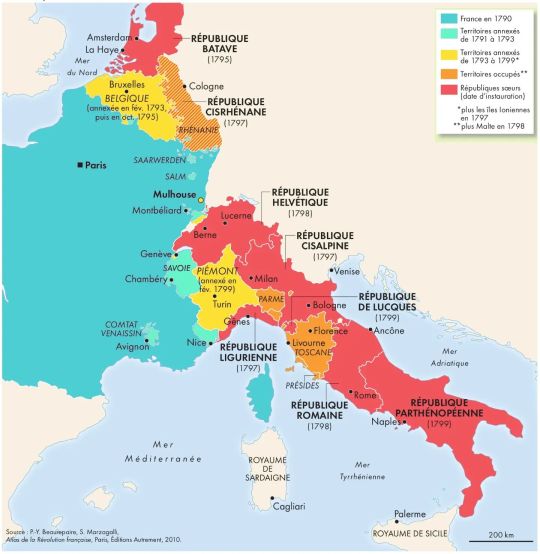
France after the Peace of Lunéville, 1801.
« Nouvel atlas de l’histoire de France », Cohen, Destemberg, Dusserre & Houte, Autrement, 2016
by cartesdhistoire
Belgium was annexed on October 1, 1795, after the United Provinces became a sister republic, theoretically independent (treaty of alliance of May 16).
In Italy, Bonaparte won dazzling victories, and between the spring and summer of 1797, he signed armistices, while Italian patriots took advantage of the offensive to proclaim the republic in Piedmont. The Peace of Campoformio (October 17, 1797) gave Austria the archbishopric of Salzburg and Veneto but confirmed the possession of Belgium and the left bank of the Rhine (from Alsace to Koblenz) to France, finalizing the birth of the Ligurian and Cisalpine Republics. In February 1798, French military intervention allowed Roman patriots to proclaim the Republic. These were allied states – with very formal independence.
In January 1799, the patriots led General Championnet to proclaim the ephemeral Neapolitan Republic which lasted only until June 24. However, after the occupation of Tuscany by French troops, all of Italy except Venice was occupied by the French, and most of it formed republics. The Italian unity desired by the patriots was possible, but the Directory took care, on the contrary, to prevent it definitively: from February 8 to 16, 1799, a referendum took place in Piedmont which gave a strong majority for annexation by France (effective on September 11, 1802).
On February 9, 1801, the Treaty of Lunéville was signed between France and Austria. It confirmed for France the possession of the Austrian Netherlands, the principality of Liège, and the left bank of the Rhine. Austria had to recognize the Batavian Republic and the Helvetic Republic. Additionally, Article 7 of the treaty provided for compensation to the dispossessed German princes, to whom territories would have to be redistributed, thus giving France the position of continental arbiter.
57 notes
·
View notes
Text
Some basic facts to educate your antisemites, Islamists, and ignoramuses:
1. Jews are descendants of Jacob, son of Isaac and grandson of Abraham. Jacob’s other name is Israel.
The people of Israel (Jews) lived in Israel for 3,600 years, 2,000 years before the birth of Islam.
2. Local Arabs were offered half of Israel as part of the 1947 partition plan. The Arabs refused.
3. Since 1948, the local Arabs were offered multiple peace treaties. The Arabs refused.
4. If you prefer the more recent argument, Israel won every single war imposed by its neighbors. Some of those victories included claiming new territories. Generally, Israel withdrew from territories in exchange for peace (see Sinai desert and the peace treaty with Egypt). Regarding Gaza, in 2005 Israel withdrew from Gaza to the 1967 line.
5. Of all the wars its neighbors lost, let's not forget WW2, the war in which The Grand Mufti of Jerusalem, Amin al-Husseini, met with Hitler, aligned with the Nazis who trained numerous Arab regiments focused on killing Jews in the Levant. By what right do allies of Nazi Germany think that any of their previous claims are restored? They, and millions of others, lost those rights.
6. The partition plan was a U.N. decision, not an Israeli or British decision.
7. Rape is wrong. Entering homes to torture and murder children is wrong. Kidnapping anyone, let alone civilian babies, teens, women, and the elderly is wrong. These are war crimes and none of these actions can be justified.
8. Performing some or all of the actions mentioned in Section 7 is likely to cause a war.
9. Israel is obligated to follow international law. This does not mean its responsibility towards Gazans is greater than that of Hamas.
10. If you support Hamas’s claim to power you also acknowledge it’s the ruling party in Gaza, and therefore it holds the sole responsibility for the consequences of its actions.
11. Being ignorant of language and the rules of engagement in war -- is no excuse to engage in antisemitic behavior online. Understand that attacking and eliminating a terror group is not genocide. The fact that a war has casualties does not make it a genocide. If that was the case, every single war in history would constitute a genocide.
12. There is no ethnic cleansing, and the opposite is the truth. The accusation of ethnic cleansing and apartheid is basic gaslighting. 20% of Israel’s population is Arab. Some of these Arabs are parliament members, Supreme Court judges, prominent doctors, lawyers, entrepreneurs, board members and senior management teams of prominent Israeli corporations, IDF and police officers, talk show hosts and singers.
13. If Hamas lays down its arms and release the hostages today, there will be no more war. If Israel lays its arms today, there will be no more Israel.
#secular-jew#israel#jewish#judaism#israeli#jerusalem#diaspora#secular jew#secularjew#islam#Hamas#terrorism#HASBARA#am yisrael chai#gaza#Samaria#judea#Judah#Isaac#abraham#un partition plan#1948#oct 7 2023#10-7-23
67 notes
·
View notes
Text
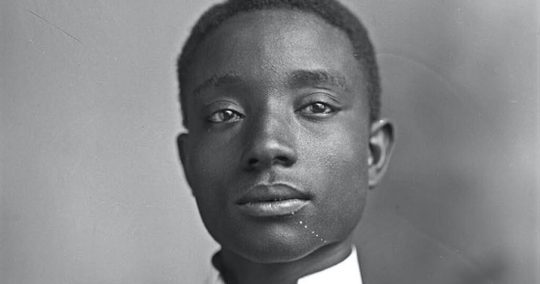
Freedmen Seek Their Fair Share of Billions of Dollars in Federal Aid and Why We Should Care/Rise UP and Support Them
By Eli Grayson
Eagle Guest Writer
Eli Grayson is a Creek Citizen and unabashed supporter of the Freedmen descendants of the 5 Civilized Tribes and the 1866 Reconstruction Treaties.
This past week, we celebrated our Nation’s 244th year of Independence with family and friends over BBQ and fireworks, we should all stop to reflect on its significance, particularly in light of the Black Lives Matter (BLM) movement.
The protests that have swept the country by those outraged over the death of George Floyd, Breonna Taylor, Ahmaud Arbery, and far too many others, most of whose names have not garnered national attention, has sparked a long-overdue National dialogue about the treatment of Black Americans in the United States, a reckoning with this country’s past, the many vestiges of slavery that continue today, and what we as a country can and must do to address racism. [It also reminds ALL of us that we have a long way to go.]
Not only have the egregious deaths of George Floyd, Breonna Taylor, and Ahmaud Arbery led to a growing chorus of voices calling for criminal justice reform, it has prompted many to reflect upon racism in both its subtle and overt forms today. It has prompted many to learn about events long celebrated by Black Americans such as Juneteenth (even the NFL recently recognized Juneteenth as an official holiday). And it has prompted many to consider what steps we as individuals, and as a society, can take to affirmatively address it. Here in Oklahoma, attention has focused on Black Wall Street and the 1921 Tulsa Race Massacre.
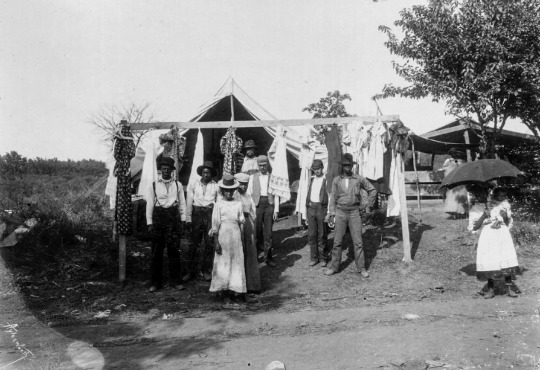
Well known is the U.S. Government’s abhorrent treatment of Native Americans, which included abrogation of countless treaties, appropriation of land, and forced removal to Western territories, including what is today Oklahoma.
Less well known, however, is the fact that the Cherokee, Chickasaw, Choctaw, Muscogee (Creek) and Seminole Nations – collectively known today as the Five Civilized Tribes – enslaved Africans. Like Southern plantation owners, they bought and sold slaves and treated them as chattel property. Indeed, slaveholding was such an integral part of the daily life of these tribal nations that each entered treaties with the Confederate States of America in 1861 to ensure its continuance.
Many Americans recently learned for the first time about the meaning and significance of Juneteenth, when nearly all remaining slaves in the United States and its territories were freed – a full 71 days after Confederate General Robert E. Lee surrendered at Appomattox on April 9, 1865 to Union forces led by General Ulysses S. Grant.
Enslaved Africans of Indian Territory
This was not the case for the enslaved Africans of Indian Territory. Even after Lee’s surrender, and even after General Granger read his Orders, the enslaved Africans of Indian Territory were kept in bondage.
Sadly, it was not until the Five Tribes of Indian Territory entered Treaties with the U.S. Government on March 21, with the Seminole Nation, on April 28, with the Chickasaw and Choctaw Nations, on June 14, with the Muscogee (Creek) Nation and on July 19, with the Cherokee Nation in 1866 – more than a year after Lee’s surrender – were these slaves granted freedom, tribal citizenship, and equal interest in the soil and national funds.
Each of these treaties (collectively known as the Treaties of 1866) contained provisions freeing the slaves and an express acknowledgement that the U.S. Constitution was, and shall remain, the Supreme Law of the land. Notably, there was no mention of tribal law or sovereignty insulating these slave holding tribes from full compliance with the U.S. Constitution, which includes all the Civil War reconstruction amendments.
Today, we find ourselves at a turning point in society. Similar to the country as a whole, the Cherokee, Chickasaw, Choctaw, Muscogee (Creek), and Seminole Nations must take this seminal moment to carefully examine their slaveholding past, their prior allegiance with the Confederacy, enshrined through Treaties entered in 1861, and how they can make amends by fully adhering to both the letter and spirit of the 1866 Reconstruction Peace Treaties.
Congressional legislation
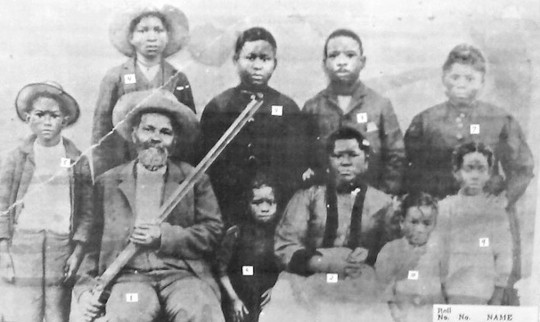
The three House bills are H.R. 2, the Invest in America Act, which includes $1 billion for the Native American Housing Block Grant Program to create or rehabilitate over 8,000 affordable homes for Native Americans on tribal lands; H.R. 6800, the HEROES Act, which includes $6 billion for housing and community development to respond to the Coronavirus; and H.R. 5319, the Native American Housing and Self-Determination Reauthorization Act (NAHASDA), which would authorize $680 million in grants to tribes in the first year and grow to $824 million in the fifth and final year.
Why is this important and why should you care? NAHASDA was originally passed by Congress in 1996 to address poor housing conditions in Indian country and last re-authorized in 2008. It is a flagship Federal law for Native American tribes and the vehicle through which approximately $650 million flows annually to the tribes. In Oklahoma, the Five Civilized Tribes receive more than $62 million annually in direct grants for housing and community development projects. These grants are based on a formula that takes into account various factors including the number of tribal members. Notably, these grants are supported by taxpayers.
For the 2021 Fiscal Year, the U.S. Department of Housing and Urban Development (HUD), which is responsible for administering NAHASDA, has informed the Five Civilized Tribes that they can expect to receive $62,223,462. Thus, nearly 10 percent of all NAHASDA grant funds will go to just these five tribes. By any measure, this is a significant sum, particularly when you consider that there are approximately 573 federally recognized tribes in the United States today, according to data from the federal Bureau of Indian Affairs. And, the final amount will be even greater as Congress has (appropriately) increased the amount of funds for NAHASDA far above the amounts requested by this Administration, including an appropriation of $825 million for this Fiscal Year.
Oklahoma Tribes receive millions in housing aid
Native American Tribes also receive other competitively awarded grants from HUD through a program known as the Indian Community Development Block Grant program. The Choctaw Nation was recently awarded $900,000 to rehabilitate 60 single-family homes while the Cherokee Nation received the same sum to construct a community building, which will house the Early Head Start program. The Chickasaw Nation was awarded $900,000 to construct a youth center in Ardmore, Oklahoma that will provide a safe and clean place for activities and services for Chickasaw tribal youth while the Muscogee (Creek) Nation will use its $900,000 award to construct a facility on the campus of the College of Muscogee Nation. The facility will include space for exhibitions and a lecture hall. These are worthy projects and it is vital that all those in need, including Freedmen descendants, can benefit.
Why Freedmen are concerned
Now if you have read this far, you must be thinking this is great news for these five tribes. And indeed, it is. However, for the Freedmen who are de facto members of the tribe, they may never see a dime of these funds if history is any guide.
Steps such as conditioning or denying the issuance of Citizenship Cards to Freedmen descendants, as well the disenrollment of Freedmen as tribal citizens, is what first led Congress in 2008 to include language in the NAHASDA re-authorization bill to link the receipt of NAHASDA housing grants to compliance with the treaty rights and benefits conferred on the Freedmen through the 1866 treaties.
That is why the efforts of House Financial Services Committee Chairwoman Maxine Waters, D-California, to fight on behalf of the Freedmen of all Five Civilized Tribes is so vital.
The committee she chairs oversees HUD and is responsible for periodically re-authorizing NAHASDA. A bi-partisan bill introduced in Congress last December would re-authorize NAHASDA. However, unlike the 2008 legislation, which contained language to prevent the Cherokee Nation from denying Cherokee Freedmen under the Act, the bill introduced by Rep. Denny Heck and co-sponsored by Reps. Scott Tipton (R-Colorado), Ben Ray Lujan (D-New Mexico), Tom Cole (R-Oklahoma), Deb Haaland (D- New Mexico), Don Young (R-Arkansas), Rep. Gwen Moore (D-Wisconsin), and Rep. Tulsi Gabbard (D-Hawaii), does not contain any protections for the Cherokee Freedmen nor the Freedmen of the other Civilized Tribes. Similarly, the version introduced in the Senate last week is devoid of such protections for the Freedmen.
Disturbed by the pattern of denying benefits to Freedmen, Chairwoman Waters is seeking assurance that descendants of Freedmen are not denied NAHASDA funds received by the Tribes. The Descendants of the Freedmen of the Five Civilized Tribes have been working to include language that would ensure that the Freedmen of all Five Civilized Tribes receive taxpayer funded NAHASDA benefits. A similar effort advanced by former House Financial Services Committee Chairman Barney Frank was successful and helped to ensure that Cherokee Freedmen received NAHASDA benefits. And in case, any question whether such protections were needed, one look only to the fact that HUD held up NAHASDA funds to the Cherokee Nation for noncompliance.
Native Americans keep fight against Freedmen
Given the harsh treatment of Native Americans at the hands of whites, one naturally would expect these Five Tribes and their supporters and defenders to be more sensitive to the plight of Freedmen who today make up more than 200,000 descendants.
The reality has been quite the opposite.
Despite knowing all this, tribal leaders and their supporters and defenders continue to maintain that such language is not needed and further argue that such language infringes upon the sovereign rights of ALL Native American tribes.
Both arguments could not be further from the truth.
Language ensuring that the Freedmen have access to federal housing benefits is urgently needed for the very reason that Freedmen have routinely been denied NAHASDA benefits for years. And let’s be clear – language we are seeking does not apply to ALL tribes, but rather only to the Freedmen of the Five Civilized Tribes.
And it does not stop at NAHASDA benefits. Freedmen have been denied tribal citizenship, benefits, and the right to vote as well. Regarding sovereignty, these are federal taxpayer dollars – as such, the federal government and, by extension, its American citizens, have a vested interest in ensuring that all tribal members, including Freedmen, benefit from the funds appropriated pursuant to NAHASDA.
If tribes feel so strongly about their sovereign right to continue to discriminate against Freedmen through denial of federally funded benefits, they can opt to refuse the funding, which would then be redistributed to other tribes. Indeed, it is the height of hypocrisy for any of the Five Civilized Tribes or their supporters to makes these arguments as they count the Freedmen when it comes to the allocation of federal housing grants from HUD yet turn around and deny those very same Freedmen from receiving such benefits.
Freedmen are equal, lawful Tribal citizens
And don’t be mistaken. While Freedmen should be treated as equal citizens under the respective 1866 Treaties, the language we are seeking to include in each of these three bills carefully avoids this ensuring Freedmen receive taxpayer housing and community development benefits on the same terms and conditions as their Native American sisters and brothers.
Indeed, in many instances, these truly are their sisters and brothers given the extensive intermixing of Freedmen and By Blood tribal members over the years. Ironically, this has resulted in some members of a family being considered by the Five Tribes as Indian and therefore citizens of the Tribe while other family members being considered by the tribe as non-Indian and therefore like black sheep.
Yet every time we make a further legislative concession and are led to believe that we are close to a final agreement on language, the Tribes and their supporters and defenders move the goalposts. Sound familiar? Yes, a sensitive issue. The Freedmen only seek to ensure that the Five Civilized Tribes comply with the Treaties of 1866.
Tribal Nations’ actions throw shade on BLM
Lastly, the Five Civilized tribes cannot have it both ways. They cannot on the one hand claim they are victims of discrimination and participate in BLM rallies yet discriminate against Freedmen by denying them suffrage and other rights of tribal citizenship under the guise of sovereignty.
And we are under no illusion that fighting this battle for justice and equality will not remain a challenge. The Five Civilized Tribes have wielded their extensive influence amongst the Nation’s 573 tribes to frame the debate and shape the position of the National tribal organizations in Washington, whom the Members of Congress look to when writing laws that affect the tribes. Adding to the challenge is the fact that the Five Civilized tribes have deployed their sizable resources to contribute to key Members of Congress with the dual purpose of keeping Americans in the dark about their slaveholding past and ensuring that these legal protections for Freedmen never see the light of day in Congress.
But just like our Nation, it is time for the Five Civilized Tribes to stand up and confront their past by taking immediate and affirmative steps to ensure that all descendants of Freedmen receive the federal housing benefits.
This they can do by supporting legislation being courageously advanced by Chairwoman Waters that would require the Five Civilized Tribes to both comply with their Treaty obligations of ensuring access to benefits for Freedmen and report on their compliance to Congress.
Featured Image (Top), Buck C. Franklin, Nashville, Tennessee, 1899, Calvert Brothers Studio Glass Plate Negatives Collection, The Tennessee State Library and Archives Blog
#Black Lives Matter for Freedmen Descendants of the Five Civilized Tribes#Black American Freedmen#Freedmen#indians#slavery
105 notes
·
View notes
Text

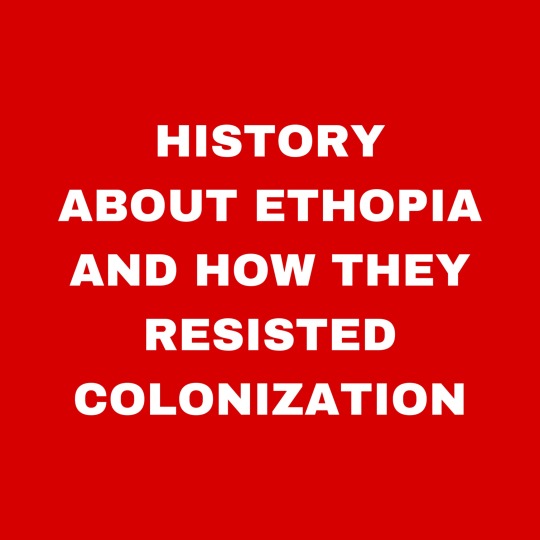
This is a message to my black brothers and sisters
Learn about your history
Ethiopia is one of the oldest countries in Africa; the emergence of Ethiopian civilization dates back thousands of years. Abyssinia or rather "Ze Etiyopia" was ruled by the Semitic Abyssinians (Habesha) composed mainly of the Amhara and Tigray, the Cushitic Agaw. In the Eastern escarpment of the Ethiopian highlands and more so the lowlands was the home of the Arab-descended Harari that founded Sultanates such as Ifat and Adal and the Afars. In the central and south were found the ancient Sidama and Semitic Gurage, among otheres. One of the first kingdoms to rise to power in the territory was the kingdom of D'mt in the 10th century BC, which established its capital at Yeha. In the first century AD the Aksumite Kingdom rose to power in the modern Tigray Region with its capital at Aksum and grew into a major power on the Red Sea, subjugating South Arabia and Meroe and its surrounding areas. In the early fourth century, during the reign of Ezana, Christianity was declared the state religion. Ezana's reign is also when the Aksumites first identified themselves as "Ethiopians", and not long after, Philostorgius became the first foreign author to call the Aksumites Ethiopians.[The Aksumite empire fell into decline with the rise of Islam in the Arabian peninsula, which slowly shifted trade away from the Christian Aksum.[citation needed] It eventually became isolated, its economy slumped and Aksum's commercial domination of the region ended.The Aksumites gave way to the Zagwe dynasty, who established a new capital at Lalibela before giving way to the Solomonic dynasty in the 13th century. During the early Solomonic period, Ethiopia went through military reforms and imperial expansion that allowed it to dominate the Horn of Africa.
How did Ethiopia Resist Imperialism?
Ethiopia, formerly Abyssinia, is one of the world’s oldest countries. Dating to around 400 BCE, the region is documented in the in the King James Version of the Bible as the Kingdom of Axum. Along with Rome, Persia, and China, Axum was considered one of the four great powers of the era. Throughout the millennia of its history, the willingness of the country’s people—from farmers to kings—to come together as one, coupled with its geographic isolation and economic prosperity, helped Ethiopia score decisive victories against a series of global colonialist forces.
Ethiopia is considered “never colonized” by some scholars, despite Italy's occupation from 1936–1941 because it did not result in a lasting colonial administration.
Seeking to expand its already considerable colonial empire in Africa, Italy invaded Ethiopia in 1895. In the ensuing First Italo-Ethiopian War (1895-1896), Ethiopian troops won a crushing victory over Italian forces at the Battle of Adwa on March 1, 1896. On October 23, 1896, Italy agreed to the Treaty of Addis Ababa, ending the war and recognizing Ethiopia as an independent state.
On Oct. 3, 1935, Italian dictator Benito Mussolini, hoping to rebuild his nation’s prestige lost in the Battle of Adwa, ordered a second invasion of Ethiopia. On May 9, 1936, Italy succeeded in annexing Ethiopia. On June 1 of that year, the country was merged with Eritrea and Italian Somalia to form Africa Orientale Italiana (AOI or Italian East Africa).
Ethiopian Emperor Haile Selassie made an impassioned appeal for assistance in removing the Italians and re-establishing independence to the League of Nations on June 30, 1936, gaining support from the U.S. and Russia. But many League of Nations members, including Britain and France, recognized Italian colonization.
It was not until May 5, 1941, when Selassie was restored to the Ethiopian throne, that independence was regained.
Ethiopia's ability to resist being swept up in the "Scramble for Africa" can be credited to the stability of its longstanding imperial government, beginning with the Abyssinian Empire in the 13th century, and lasting into the late 20th century, with the exception of a brief Italian occupation during the 1930s. King Menelik II, the Emperor during the period of rampant European exploration and colonization in Africa, was careful to cultivate an alliance with the smaller surrounding kingdoms of North Africa, and with European powers including Italy and Russia. When Italy began to turn the sights of their imperial ambitions toward Ethiopia, the Ethiopian military became the only African kingdom able to successfully resist the military might of European colonial power, using Russian-supplied weapons to defeat the Italian invading force at the Battle of Adwa in 1896. In the aftermath of the battle, in exchange for permanent recognition as an independent empire, Menelik II granted Italy the right to claim the neighboring territory of Eritrea under their imperial umbrella.
Ethiopians have a history of taming lions.
Many Emperors kept pet lions including Halie Selassie. Occasionally visitors like Kwame Nkrumah could pet one of the lions!
This practice of keeping lions is said to date back thousands of years to the Axumite period.The descendants of the Royal Lions currently live in the Addis Ababa zoo.
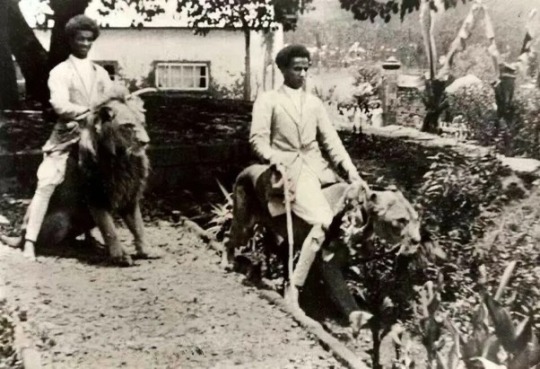
Meet his imperial majesty, the King of the Jungle.
And if, with his thick, shaggy mane Challa seems to have something of a frisky regal air about him - it's because he knows that he is a genuine blue blood.Challa is a direct descendant of Mochuria and Mollua - royal lions, which the late Emperor Haile Selassie kept as pets. The Emperor's practice of keeping pet lions is said to date thousands of years back to the Axumite period.Years ago in Ethiopia, Lions were pets to the people, some were used like donkeys, some like dogs kept at home. Emperor Haile Selassie of Ethiopia had lions he kept as pets, while some Ethiopians could even ride on them. These were not wild lions, they grew up with humans and became domesticated.They didn't go after human blood or other animals, lions roamed around the streets of Ethiopia and live was beautiful with them. Ethiopia is in East Africa, it's a rugged, landlocked country split by the Great Rift Valley, Ethiopia is a place of ancient culture, they believe and still hold on to ancient affairs.
Any lion that goes wild was immediately hunted killed, they were only killed if they kill a human and not animals like goats and chickens. They forbid killing and eating of any lion because lions were pets used in different palaces.
Ethiopia as a country had its origin in about 980 B.C., which makes it one of the oldest nations in the world.
Due to this very long history and an unmatched diversity of people and cultures, the country has often been described as a “museum of peoples”. With such a highly diverse population, Ethiopia houses an intricate tapestry of language and ethnic groups.
Also nicknamed the “Land of 13 Sunshine’s”, Ethiopia is often described as one of the most enthralling and enchanting places in the world – and definitely in Africa.
Ethiopia may not be the first place any traveller think of when planning or booking a next holiday, but it may just as well soon be the case. As African country Ethiopia can boast about having been at peace for at least the previous 15 years or more years and its economy is consequently one of the fastest growing in the world.
With the added bonus of an astounding diversity of landscapes, mixture of cultures and history that tracks back to when homo sapiens first started to raise itself up onto two legs, a traveller suddenly may look forward to a surprising and breath-taking travel destination.
But talking about planning and holiday dated, you probably didn’t know that this unique nation even has its own calendar?
This is but one of a myriad fascinating facts about the country, of which a number are discussed in this article. Looking at the country’s ancient and statutory history, its religion, culture, people and natural phenomena, here are at least 44 random but fascinating facts that you can ponder in anticipation of a visit to this eastern African country in the near future:
Fact number 1 – The oldest people in the world probably lived here.
Fact number 2 – Ethiopia is the oldest independent country in Africa and the only African country that could evade colonial rule.
Fact number 3 – Ethiopia was one of the first African forces to achieve a significant victory over a European colonial power.
Fact number 4 – Ethiopia has a rich history of rulers, including emperors and queens.
Fact number 5 – Ethiopia is perceived to be the diplomatic capital of the African continent
Fact number 6 – Ethiopia is the country with the second highest population in Africa, and with almost 1,5 % of the world population.
Fact number 8 – Ethiopia has the most orphans in the world.
Fact number 10 – Addis Ababa is the highest capital city in Africa.
Fact number 11 – More than 200 dialects are spoken by the peoples of the country.
Please like and share so others can see, drop your comments below and let me know what you think.
98 notes
·
View notes
Photo

The Roman Empire during the Flavian Dynasty, 69 - 96 CE
A map illustrating the territorial extent and political boundaries of the Roman Empire during the Flavian Dynasty, around 96 CE. Although a short-lived sequence of reigns from Vespasian (69 - 79 CE) through Titus (79 – 81 CE), until Domitian (81 - 96 CE), the Flavians (an Italian gentry, and not traditional Roman aristocracy) are remembered for restoring stability to Rome after the turbulent reign of the last Julio-Claudian – Nero, and the civil wars that had wreaked havoc on the Empire and Italy in particular. Theirs was a rule noteworthy for increased recruitment of equites (upper-class plebeians) to the imperial administration and civil service, the destruction of Jerusalem and the Temple, the eruption of Mount Vesuvius, the completion of Amphitheatrum Flavium (better known as the Colosseum for being in the vicinity of a giant 30 meters (98 feet) bronze statue called the Colossus of Nero) and signing an uneasy peace treaty with the Dacians before the conflict flared up again under the reign of emperor Trajan.
Image by Simeon Netchev
91 notes
·
View notes
Text

south of tsuut’ina in millarville, treaty 7 territory
9/9/23
treaty 7 is home to the siksika (blackfoot), kainai (blood), piikani (peigan), îyârhe nakota (stoney), tsuut’ina (sarcee), and the otipemisiwak (métis)
#literally blown away by the beauty of the foothills#we drove through tsuut’ina rez to get here#saw a tsuut’ina stop sign#it was so beautiful#ph#photography#landscape#landscape photography#green#summer#foothills#prairies#my work#my photos#original photography#alberta#canada#treaty 7#native#otipemisiwak#métis#michif
80 notes
·
View notes
Photo
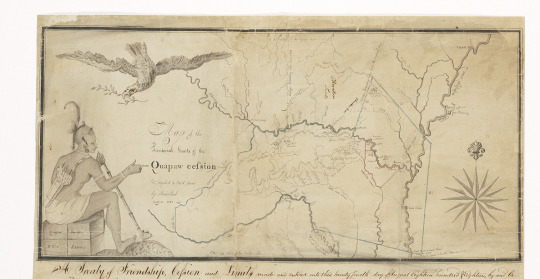

Treaty Between the United States and the Quapaw Indians Signed at St. Louis, August 24, 1818.
Record Group 11: General Records of the United States Government
Series: Indian Treaties
File Unit: Ratified Indian Treaty 96: Quapaw - St. Louis, August 24, 1818
Image description: Detailed map of the area of Arkansas River and Mississippi River, with boundaries of red and blue; with an eagle on top left carrying olive branch in its beak; a Native American with a peace pipe on the left, presumably of the Quapaw tribe, pointing to the inscription:
Map of the Territorial Limits of the Quapaw cession
Compiled & Laid down by Rene Paul
August. 1818
Transcription:
[image: Detailed map of the area of Arkansas River and Mississippi River, with boundaries of red and blue; with an eagle on top left carrying olive branch in its beak; a Native American with a peace pipe on the left, presumably of the Quapaw tribe, pointing to the inscription:
Map of the Territorial Limits of the Quapaw cession
Compiled & Laid down by Rene Paul
August. 1818]
A treaty of Friendship, Cession and Limits made and entered into this twenty fourth day of August Eighteen hundred & Eighteen, by and be-
tween [between] William Clark and Auguste Chouteau, Commissioners on the part and behalf of the United States of the one part, and the Undersigned Chiefs,
and Warriors of the Quawpaw Tribe or Nation, on the part and behalf of this said Tribe or Nation of the other part. -
Art: I: The Undersigned Chiefs and Warriors for themselves and their s'd [said] Tribe or Nation do hereby acknowledge themselves to be under the protection of the United States, and
of no other State, Power, or Sovereignty whatsoever.
Art: II: The Undersigned chiefs and Warriors, for themselves and their said Tribe or Nation do hereby, for an in consideration of the promises and stipulations herein after named, Cede
and relinquish to the United States forever, all the Lands within the following boundaries, viz: Beginning at the mouth of the Arkansas River, thence extending up the Arkan-
saw [Arkansaw] to the Canadian fork and up the Canadian fork [to its source, thence south to Big Red river and down] that river to the Big raft, Thence a direct line so as
to strike the Mississippi River, thirty Leagues in a straight line below the mouth of Arkansaw, together with all their claims to land East of the Mississippi, and north of the Ar-
kansaw river, included within the couloured lines, 1, 2, and 3 on the above map: - with the exception and reservation following: that is to say, the tract of country bounded as follows;
Beginning at a point on the Arkansaw river opposite the present post of Arkansaw, and running thence a due South West course to the Washita river, thence up that river to the
[in pencil, faint] mouth of the Saline [/] Saline fork, and up the Saline fork to a point from whence a due North East course would strike the Arkansaw river [insert] at the little rock [/] and thence down the right bank of the Arkan-
[in margin, circled] 2-9 [/] saw to the place of beginning, which S'd [said] tract of land, last above designated and reserved, shall be surveyed and marked off, at the Expense of the United States, as
any State or Nation, without the approbation of the United States, first had and obtained.
Art III; It is agreed between the United States, and the said Tribe, or Nation, that the individuals of the S'd [said]Tribe or Nation shall be at liberty to hunt within the Territory by them
ceded to the United States, without hindrance or molestation so long as they demean themselves peacefully and offer no injury or annoyance to any of the citizens of the United
States, and until the S'd [said] United States may think proper to assign the Same, or any same or any portion thereof, as hunting grounds to other friendly indians.
Art IV; No Citizen of the United States, or any other person shall be permitted to settle on any of the lands hereby allotted to and reserved for the S'd [said] Quawpaw Tribe, or Nation, to live and
hunt on; Yet, it is expressly understood and agreed on by and between the parties aforesaid, that at all times the citizens of the United States, shall have the right to travel
and pass freely without toll or exaction through the Quawpaw reservation, by such roads or routes as now are, or hereafter may be, established.
Art V; In consideration of the cession and stipulations aforesaid the United States do hereby promise, and bind themselves to pay and deliver to the s'd [said] Quawpaw Tribe, or Nation, immediately
upon the execution of this Treaty, Goods and Merchandise to the value of Four Thousand Dollars, and to deliver, or cause to be delivered to them yearly, and every year, Goods and Mer-
chandise [merchandise] to the value of One Thousand Dollars to be estimated in the city, or place in the United States, where the same are procured, or purchased.
Art VI; Least the friendship which now exists between the United States, and the Said Tribe, or Nation should be interrupted by the misconduct of individuals, it is hereby agreed, that
for injuries done by individuals, no private revenge, or retaliation shall take place, but instead thereof, complaints shall be made by the party injured to the other. - By the Tribe, or
nation aforesaid, to the Governor, Superintendant of Indian Affairs, or some other person, authorized or appointed for that purpose, and by the Governor, Superintendent, or other person authorized
to the [crossed out] said [/] Chiefs of the S'd [said] Tribe, or Nation. And it shall be the duty of the Said Tribe or Nation, upon complaint being made as aforesaid, to deliver up the person or persons against whom the complaint is made, to the end that he or they may be punished agreeably to the Laws of the State or Territory where thee offence may have been committed; And in like manner, if any robbery,
violence, or murder, shall be committed on any indian, or Indians belonging to the Said Tribe, or Nation, the person, or persons so offending shall be tried, and if found guilty,
punished in like manner as if the injury had been done to a white man._ And it is further agreed that the chiefs of the said Tribe or Nation shall to the utmost of their power
exert themselves to recover horses or other property which may be Stolen from any citizen or citizens of the United States, by any individual or individuals of the Said Tribe, or
Nation, and the property so recovered shall be forthwith delivered to the Governor, Superintendent, or other person authorized to receive the same, that it may be restored
to the proper owner. And in cases where the exertions of the Chiefs shall be ineffectual in recovering the property stolen, as aforesaid, if sufficient proof can be obtain-
ed [obtained], that such property was actually stolen by an indian, or indians belonging to the Said Tribe, or Nation, a sum equal to the value of the property which has been stolen, may
be deducted by the United States from the Annuity of S'd [said] Tribe or Nation. And the United States hereby guarantee to the individuals of the Said Tribe, or Nation
a full indemnification for any horse, or horses, or other property which may be taken from [insert] them [/] by any of their citizens; Provided, the property so stolen cannot be recovered, and
that sufficient proof is produced that it may actually stolen by a citizen or citizens of the United States.
Art VII; This Treaty shall take effect and be obligatory on the contracting parties, as soon as the same shall have been ratified by the President of the United States,
by and with the advice and consent of the Senate.
[left column]
Done at St Louis in the presence of
[signed] R. Wash Secretary to the Commission
[signed] R. Paul Col. M. M.
C. I.
[signed] Jn Ruland Sub Agent & c
[signed] R Graham Ind Agt
[signed] M Lewis Clark
[signed] J. T. Honore Ind Intpr
[signed] Joseph Bonne Interpreter
[signed] Julius Pescay
[signed] Stephen Julian, U.S. indn interpt.
[signed] James Loper
[signed] William P Clark
[middle column]
[signed] Wm Clark
[signed] Aug. Chouteau [seal]
Kra-ka-ton, or }
the dry man } his + mark [seal]
Hra-da-paa, or }
the Eagles Bill } his + mark [seal]
Ma-hra-ka, }
or Buck Wheat } his + mark [seal]
Hon-ka-daq-ni his + mark [seal]
Wa-gon-ka-datton his + mark [seal]
Hra-das-ka-mon-mini, }
or the Pipe Bird } his + mark [seal]
Pa tonq di, or the }
approaching Summer } his + mark [seal]
Te hon ka, or the }
Tame Buffaloe } his + mark [seal]
[right column]
Ha-mon-mini }
or the night walker } his + mark [seal]
Washing-tete-ton }
or mocking bird bill } his + mark [seal]
Hon-te-ka-ni his + mark [seal]
Ta-ta-on-sa or }
the whistling wind } his + mark [seal]
Mozate te } his + mark [seal]
#archivesgov#August 24#1818#1800s#Native American history#American Indian history#Indigenous American history#Quapaw#Indian treaties
76 notes
·
View notes
Text
The Republic of Yucatán (Spanish: República de Yucatán) was a sovereign state during two periods of the nineteenth century. The first Republic of Yucatán, founded May 29, 1823, willingly joined the Mexican federation as the Federated Republic of Yucatán on December 23, 1823, less than seven months later.[1][2] The second Republic of Yucatán began in 1841, with its declaration of independence from the Centralist Republic of Mexico. It remained independent for seven years, after which it rejoined the United Mexican States. The area of the former republic includes the modern Mexican states of Yucatán, Campeche and Quintana Roo. The Republic of Yucatán usually refers to the Second Republic (1841–1848).
The Republic of Yucatán was governed by the Constitution of 1841 which guaranteed individual rights, religious freedom and what was then a new legal form called amparo (English: protection).[3] The 1847 Caste War caused the Republic of Yucatán to request military aid from Mexico. This was given on the condition that the Republic rejoin the Mexican Federation.
The Caste War of Yucatán or ba'atabil kichkelem Yúum[2] (1847–1915) began with the revolt of native Maya people of the Yucatán Peninsula against Hispanic populations, called Yucatecos. The latter had long held political and economic control of the region. A lengthy war ensued between the Yucateco forces based in the northwest of the Yucatán and the independent Maya in the southeast.[3][4][5]
The Caste War took place within the economic and political context of late colonial and post-independence Yucatán.[6] By the end of the eighteenth century, Yucatán's population had expanded considerably, and white and mestizo Mexicans migrated to rural towns. Economic opportunities, primarily in the production of henequen and sugar cane, attracted investment and encroachment onto indigenous customary lands in the south and east of the peninsula.[7] Shortly after the Mexican War of Independence in 1821, the Yucatecan congress passed a series of laws that facilitated and encouraged this process. By the 1840s, land alienation had increased precipitously, forcing much of the Maya peasantry to work as indebted laborers on large estates (haciendas). This had a dramatic effect on the Maya and precipitated the war.[8]
In the 1850s, the United Kingdom recognized the Maya state because of the value of its trade with British Honduras (present-day Belize) and provided arms to the rebels at the beginning of the insurgency.[9] By 1867, the Maya occupied parts of the western part of the Yucatán, including the District of Petén, where the Xloschá and Macanché tribes allied with them. Growing investment in Mexico resulted in a change in United Kingdom policy, and in 1893 London signed a new treaty with the Mexican government, recognizing its control of all of the Yucatán, formalizing the border with British Honduras, and closing the British colony to trade with Chan Santa Cruz, the capital of the Maya.
The war unofficially ended in 1901 when the Mexican army occupied Chan Santa Cruz and subdued neighboring areas. Another formal end came in 1915 when Mexican forces led by Yucatán Governor Salvador Alvarado subdued the territory. Alvarado introduced reforms from the Mexican Revolution that ended some Maya grievances. Skirmishes with small settlements that rejected Mexican control continued until 1933.
54 notes
·
View notes
Text
Love Song for A Vampire Pt. 19

Pairing(s): Edward Cullen x Wolf!Reader, Edward Cullen x Bella Swan
Warnings: irina being bitchy, tanya attempting to swoop in on Edward
Words: 3k
Summary: Edward makes a trip to the Denali Coven
Part 1 Part 2 Part 3 Part 4 Part 5 Part 6 Part 7 Part 8 Part 9 Part 10 Part 11 Part 12 Part 13 Part 14 Part 15 Part 16 Part 17 Part 18 Part 20 Part 21 Part 22 Part 23 Part 24 Part 25 Part 26 Part 27 Part 28 Part 29 Part 30 Part 31 Part 32 Part 33 Part 34 Part 35 Part 36 Part 37 Part 38 Part 39
Summer in Alaska made the state break out into lush beauty, illuminated by a sun that is finally strong enough to break through the bog of clouds and snow. Wild flowers curled against the trunks of trees; tall grass sways gently against the breeze that rolls through. Beautiful, a land so full of colorful life and vibrancy.
This time around though, Edward pays no attention to such trivial things as nature. He's on a mission. Having driven for three straight days to make it to the Denali coven territory, Edward kept his mind focused on the task at hand. Running over what he planned to say to them, Edward is still lost in his thoughts by the time his car turns into the long driveway that led up to their mountainside home made of dark wood, stone and large panel windows. Already in one window he spied a blonde head that quickly disappeared.
Parking in front of their stone garage, the front door opens and Carmen smiles at him. "It's good to see you, Ed." Her dark hair separated her from the three vampire ladies who crowded behind her. The only male in the coven, Carmen’s mate Eleazor has his arms crossed with a patient grin on his face. Really, it was Eleazor who might offer the Cullens the biggest help if the Volturi brought a fight to them. Such a long time ago, Eleazor had been an actual member of the Volturi guard. He had the best insight of what Aro, Caius and Marcus’ mind.
When Bella first moved to Forks, confused with how he felt for her, Edward went to the Denali Coven to clear his mind. Once again he was seeking some sort of support from them. A bit embarrassing he had to admit.
They parted to let him inside. Tanya, he noticed, was attempting to keep a polite distance but her gold eyes couldn’t hide the emotions she was feelings. Her thoughts conveyed those of longing. Difficult to hold her gaze for much longer, Edward turned back to Carmen and the others. Their smiles didn’t dim.
Kate smiled patting the cushion of their sofa, indicating for Edward to sit down. “It’s good to see that you’re alive.”
Carmen winced a bit, the reminder of how they had refused to help the Cullens with Victoria. In the end they backed up Irina whose lover Laurent, former acquaintance of Victoria’s, was killed by the wolf pack.
Everyone felt the heavy cape of dread that filled the living room. Would they refuse him if he were to mention that any fight the Cullens had, the wolves would fight alongside them? The Treaty was revised, allowing more freedom between the Cullen-La Push border.
“It was an easy fight with the wolves on our side.” Edward admitted. His mind brought up an image of (y/n) in her wolf form. Her jaws snapping and ripping into various newborns. He had felt nearly unstoppable as (y/n) protected his back. “But there arises another potential issue.”
His family had discussed for hours on the potential moves of the Denali clan, asked Alice what she could see in the near future. Many times her visions didn’t come on demand. Many agreed that they were likely to side with Irina again and attempt to stay out of the conflict. it didn’t help that it involved the Volturi, the very force that had executed Sasha and the vampire child Vasili. They wanted to keep a good distance away from anything that had to do with the vampire council.
Edward still held out hope though. Hope that they would choose to do the right thing. Bella didn’t want to be a vampire anymore, she would remain a human who was unable to protect themselves from the supernatural forces that plagued her life now thanks to Edward. Aro would not be happy about that. When they find out, they will most likely ask for Bella’s head to be delivered to them. Humans were absolutely not allowed to know the existence of such creatures like them and potentially punish the Cullens. Neither of the vampire trio that lead the council gave second chances.
“Now there’s no guarantee if the Volturi will find out. Knowing them though. . . It’s possible they might discover it sooner rather than later. We just want to cover our bases and be prepared.”
“What about the wolves?”
Carmen closed her eyes with a scowl as everyone turned to look at irina who sat across from him. Arms crossed against her chest and Amber honey eyes holding Edward down. Despite her pale, strawberry blonde hair, her eyelashes were dark. They accentuated the paleness of her skin.
He figured she would mention the large furry elephants in the room. His long fingers weave together as he sighed. “They are our allies now. They will be aiding us as well. But even they might not be enough if the Volturi bring the bulk of their army.”
“Let the Volturi have her.” irina’s thoughts slammed into Edward’s mind. The words bit, finding their target easily.
Sensing Irina’s foul mood that would soon take over the whole room, Kate puts a hand on her shoulder and steered her toward the kitchen. They spoke in near whisper voices but Edward could hear their conversation through their thoughts. Consoling, anger, so much anger, Kate trying too smother it before it truly ignited Irina to say something she couldn’t take back.
They were enough to make Edward feel like he was on a lost cause. He glanced at Tanya to gauge what she was feeling.
“Give her some time. You know how much she liked Laurant. Despite what he may have done.” Tanya mentally replied to his imploring eyes.
He did understand how Irina was feeling. The same emotion was probably running through her like it did Edward when James abducted Bella. Hunted her for sport. It’s what drove Victoria to commit the atrocities she did.
To love someone so much was a terrifying thing that led to unimaginable consequences.
“You know we want to help you, Ed.” Carmen’s tone was soft.
Eleazor nodded. “The Volturi have become nothing but thugs. Their egos are bloated after so many centuries in power. I wouldn’t mind taking them down a few notches.” He rubbed his chin in thought. “Alice. . . ?”
He shook his head. “If the wolves are part of the equation, then she’ll be unable to see anything. It gives her a migraine and disables her for a good time.”
A moment passes before Carmen suggests “Eleazor, don’t you still have a few contacts in the Volturi? Disgruntled employees like you were?”
Her mate pressed his lips into a firm line that held no promises. “I do. But if Aro catches them, you know what he’ll do. Then we’ll all be in big trouble.”
“What about the Romanian coven?” Tanya piped in. “they still haven’t forgiven the Volturi for what they did to their coven.”
Carmen’s face lights up and even Eleazor appeared to consider it. “We could try getting into contact with them. . .”
That was the crumb of hope Edward required to not lose himself completely to despair. If the whole of the Denali coven couldn’t agree to help, then the Romanians would be another good start. True that the Romanian coven only had two actual members, the lone survivors of the Volturi’s wrath. They held no special abilities like Edward and Eleazor did, but they had many connections in the vampire world. How easy it was to forget that at one point in history, the Romanian coven had been the strongest one in the known worlds.
Finally, Irina and Kate return. irina’s face still held a scowl when she looked over at Edward, but most of her steam had evaporated. Her face though. . . It was sad and tired. “Do you swear that Bella will no longer become a vampire? That she will be out of our lives and be none of our concerns after this?”
Because in the end, Edward couldn't deny that Bella had been the trigger to Laurant's death. She had been confronted by the rogue vampire on Quileute territory and thus the wolves took it upon themselves to protect her and exterminate the threat of the red eyed devil.
Stiffly, Edward inclined his head to show that he agreed. “Bella. . . She is determined on her stance now. Both her and her father want all of us to stay away from her now.”
“After all the chaos this girl has caused. . .” Irina’s mind bared its fangs in a spitting hiss. “So easily she could just rid herself of the pain she has caused.”
If his skin were capable of flushing with rage, his face would have been red. Now he only felt the white hot anger flare in his stomach.
Irina didn’t speak anymore after that, gaze finally dropping to her hands as Kate sat down on the couch alongside Tanya. All three of Sasha’s girls could appear to be biologically related. Edward knew their history and knew that despite Tanya being Sasha’s biological great-niece, Kate and Irina had no blood relation.
Carmen’s shoulders slowly relaxed at the sight of a despondent but quiet Irina. At the moment, it was better compared to her hostility. She did want to mention her own concern about the wolves. “Are you sure about their treaty? From what you told us it does nothing to protect our kind.”
“I can talk to them. I promise.” And if the rest of the pack was wary at first, then. . . Then he could count on (y/n) to slap some sense into them. Be the voice of reason. They deemed her judgement trustworthy.
He had half the mind to tell them about her. The wolf girl who had imprinted on him. Whatever god of fate pairing them up in some twisted joke.
No, it was too soon for that. First he needed to get them to agree to be on their side of the battle when it came around. Once a level of trust was acquired, then he could tell them. Maybe when the Denali coven met the wolves, they would change their mind about them. Maybe things could mend with Irina.
“Are you hungry?” Eleazor asked. “We have some freshly harvested caribou blood. Quite rich.”
Now that he mentioned it,Edward couldn’t remember the last time he had consumed blood. The fatigue in his body now made itself present. He felt sluggish and dare he admit even tired. Tired was a feeling that vampires experienced often. Not unless they were starved of any kind of nutrients.
Caribou blood was sounding fantastic.
Carmen and Eleazor showed him into the garage where they stored their stock. Explaining how they had just hunted the night before. Carmen leaned against the stainless steel fridge, turning her face away to give him a bit of privacy. Though she possessed no supernatural gift like Edward and Alice, she was an expert in reading body language and expressions hidden in the eyes. She had to be one of the most empathetic vampires Edward had ever met. Her naturally kind and strong heart persevered the vampire venom.
Taking a moment to make sure they weren’t followed, Eleazor whispered “There’s something you’re keeping away from the others. . . Isn’t there?”
It felt good to tell them about (y/n). Tell someone and not worry about their critics and judgement like his family must have felt. Only Alice and Jasper, Edward was sure, were compassionate toward him about it and held no ounce of disgust. As wonderful as Carlisle and Esme normally were, their senses and thoughts cringed at the idea of Edward being with a werewolf. Something with flesh and pumping blood yet could be immortal if they so chose.
The pair patiently listened to him, Carmen finally smiling when he was finished. “Your taste in mates are certainly. . . Unconventional.” She was smiling, eyes crinkling with mischief. Enough to make Edward actually laugh.
First a human, now a wolf. What else was this life of his going to throw at him?
“I would very much like to meet them. Both of them.” Carmen said.
“Me too.” Her mate was smiling softly.
Edward decided to grasp whatever chance he got. “Would the two of you like to come back with me to Forks? I can give you until tomorrow to think it over-”
“We would love to go to Forks with you, Edward.” Carmen’s smile beamed with excitement. Due to the old treaty with the wolves, the Denali coven had never had the opportunity to visit the Cullens. This would be a first for them. From how Esme lovingly described the home she fixed up herself, they knew how gorgeous the Cullen home must her in real life.
They would scope out the wolves themselves and relay what they learn to Tanya, Irina and Kate. The trio trusted the words of Carmen and Eleazor over Edward’s. They had been living together for hundreds of years.
“Give us tonight to tell the others. We’ll need to reassure them that we will be safe” Eleazor informed Edward. They would be reluctant to see Eleazor and Carmen off, but the two could handle themselves. Eleazor’s ability might not be of the combative nature, but he had brute strength as well. His fighting skills were known in the Volturi as well.
Agreeing that the three of them would leave tomorrow, the next walked Edward back to the house and to a guest room they had upstairs for him to relax or make whatever phone calls necessary until morning came.
Alone in the room, Edward put a barrier in his mind to block out the sometimes intrusive thoughts of others. Holding his phone up, Edward had the urge to talk to Bella. Of course he wouldn’t. He would keep to his promise this time of staying away from her. He would deal with the damages. Edward just wanted her to live out the rest of her life knowing nothing but happiness if that is what she so chooses.
Tossing it onto the nightstand, it was best that he avoid his phone for a while. He also wanted to call (y/n). Well, needed to call her to give her the heads up that two new vampires would be entering their territory. That they wanted to meet her first. He hadn’t spoken to her since the day in the woods. The same day he had stopped communication with Bella.
With so much time on his hands, a knot of worry twisted in his gut. Would Irina be bitter enough to turn to the Volturi and rat him out? Not just him but the wolves and Bella as well? It would be her perfect act of revenge. Those who had allowed harm to be dealt to a man she had a budding romance with would feel the death claws of the Volturi.
The timid presence of Tanya entered his conscious. Edward gets up to open the door. He was apprehensive, looking at her and replaying the times she had flirted and shot him longing gazes. There was nothing wrong with her looks and personality. Edward could admit how pleasing she was to the eye. She was not who his heart yearned for. Never. His life would be easier if he had. A mate that was already like him, who understood what it was like to live far longer than any human should. The horrors they had experienced in their lifetime was enough for them to bond over.
“You’re leaving so soon?” Her striking strawberry blonde hair falls to her shoulders, nearly blending into the soft, cream wool sweater she wore.
“You’re welcome to come with us too, but yes. I just want to be prepared for whatever may come. The sooner the better.” Edward doesn’t move to let her inside the room he temporarily resided in. When the two of them were alone there was a heaviness in the air. Her evident wanting of him. A thick cloud just seemed to fill in whatever room the just so happened to be trapped in.
Not used to be turned down, Tanya reigns herself in despite wanting to try and charm her way in. New sense of seriousness actually made Edward relax. A serious Tanya he could handle. “You will make sure they aren’t harmed. Right?”
“Of course.”
Tanya sighed. “Look, Kate and I want to help. We really do. But we can’t unless Irina supports it too.”
“I understand. Hey, you don’t think she’ll say anything to the Volturi. I know she bares the most resentment toward them. I’m just worried she’ll do something like that.”
”Don’t worry. We won’t let that happen. Despite what they are, the wolves have proven to be your greatest allies. Far more than we have been. But do you really want to start a fight with the Volturi?You’ll need more than us to really make a stance. If you do this, they’ll always have a grudge against your family and Ms. Swan.”
No he didn’t want to start any fights with the largest vampire coven in the world. Didn’t want to antagonize them so they unleash the swarm of their power. Any kind of disobedience displayed toward the Volturi was considered suicide.
Edward wouldn’t let them though. Even if he admitted to himself that the idea of fighting such a strong coven made him a bit nervous. “Than I’ll scour the world for others who are willing to stand up to them.”
——————————
TAGLIST: @saltedcoffeescotch , @dangerouslittlefairy , @burn-crash-rqmance , @casedoina , @avadakadabra93 , @daryldixonstorm , @blue-aconite , @xanniestired666 , @esposadomd, @godinho11 , @arin-swear-rose , @alexizodd , @melaninsugarbaby , @lyeatoalinatoheaven , @ronwownsme , @itsmytimetoodream , @afro-hispwriter , @mutandis-extremis993 , @hxgemxscles , @nightly-polaris , @corrodedcoffins-slut , @ellesalazar , @itgetzweird08 , @crybabyatthediscooffandoms , @sassyandclassyx , @scarlet2007 , @theroyalbrownbarbie , @jennyamanda8 , @stevenandmarcslove , @biancaindaeyo , @loversjoy , @turningtoclown , @vixorell , @xxthackerybinxxx , @daredevilonmyheels
#edward cullen#edward cullen fanfic#edward cullen fanfiction#edward cullen x reader#edward cullen x you#twilight#twilight saga#twilight fanfiction#twilight fandom
241 notes
·
View notes
Photo
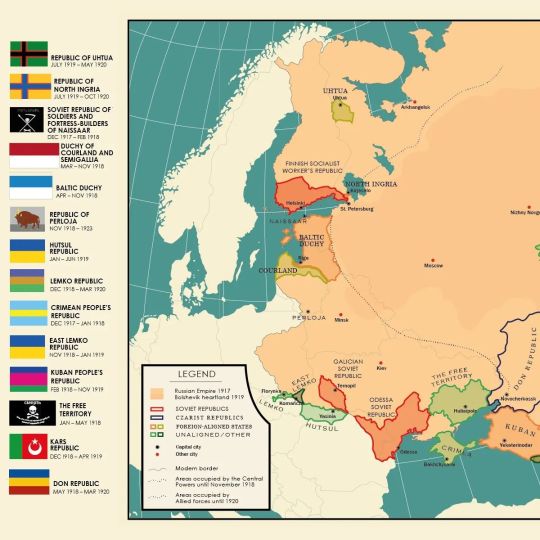
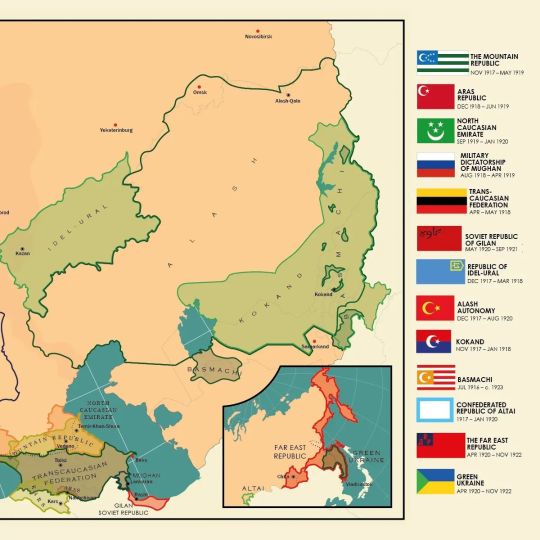
Temporary states during the Russian Civil War (1917–1922)
Anders Kvernberg (Oslo, 2018)
via cartesdhistoire
The Russian civil war (Oct. 1917-summer 1922) pitted Reds (communists), Whites (tsarists led by Wrangel, Kolchak, Denikin, Yudenitch) & Greens (armies of peasants facing Whites & Reds) against each other. In this chaos, many states have a brief independent life.
The largest is the Far Eastern Republic, a Bolshevik puppet state (from which Green Ukraine seceded). The smallest are the Republic of Perloja, limited to a Lithuanian village, presided over by a veteran of the Tsarist army, & the Soviet Republic of Naissaar, proclaimed in a fort on an Estonian island in December. 1917 by 82 Bolshevik sailors (hunted by the Germans on February 24, 1918).
The German occupiers signed a first treaty in Brest-Litovsk on February 9. 1918 with Ukraine then a second on March 3 with the Bolsheviks. Germany seizes Poland, Lithuania & Courland while Finland, Estonia, Latvia & Ukraine become independent under German control.
The Ukrainian People's Republic (non-Bolshevik), autonomous since the spring of 1917, was overthrown by the coup d'état of the conservative general Skoropadsky. With German support, he established the Hetmanate (April–Dec. 1918) and was then ousted from power during an uprising led by Simon Petliura & his (non-Bolshevik) Ukrainian People's Army. The Ukrainian republic was restored until 1921, not without first having to fight the libertarian Ukraine (or Makhnovshchina), a revolutionary peasant movement led by Nestor Makhno, who capitulated to the Bolsheviks in August 1921. Other states on Ukrainian territory are the Bolshevik Republic of Odessa, the Lemko Republic, the Komańcza Republic (or Eastern Lemko Republic) & the Hutsul Republic. At the same time, in the east of Ukraine, the anti-Bolshevik Don Cossack Republic was formed.
No state survived the creation of the USSR on December 30. 1922.
89 notes
·
View notes
Text







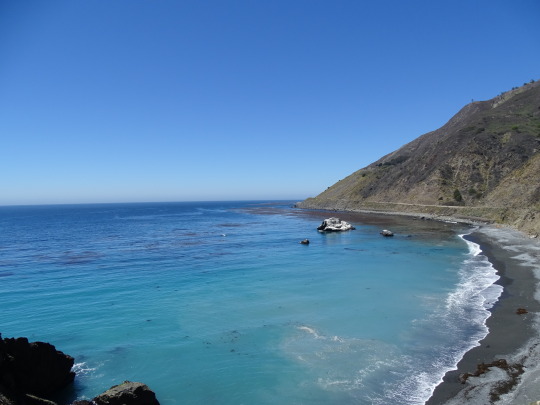

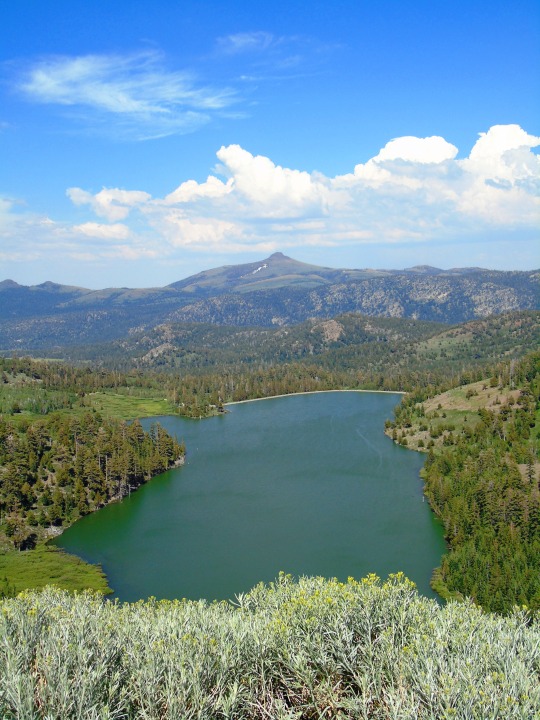

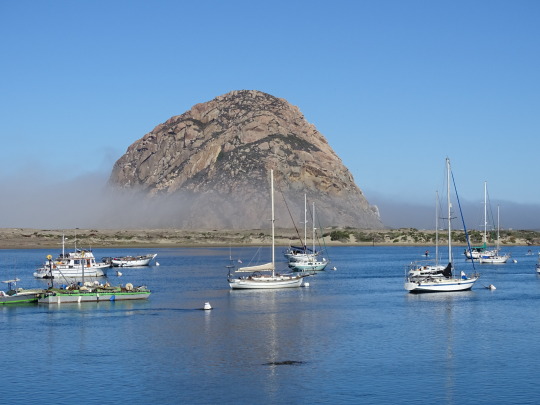







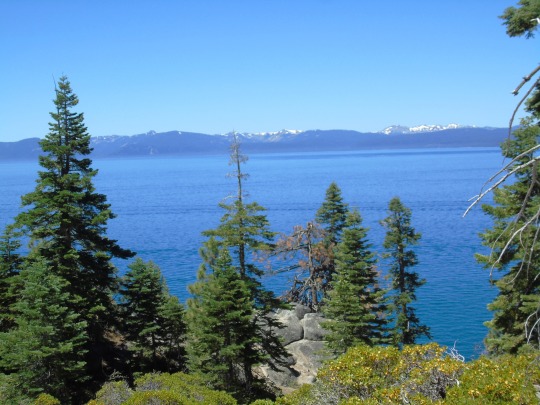



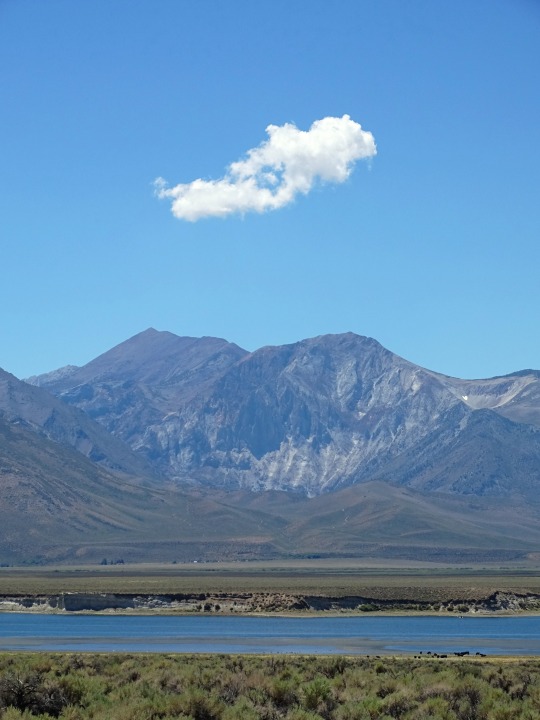
California was admitted as the thirty-first U.S. state on September 9, 1850.
California Admission Day
California Admission Day is observed on September 9 each year. It commemorates the day California was admitted into the Union as the 31st state in 1850 after it was ceded to the United States by Mexico in 1848. California became one of the few states to become a state without first being an organized territory. California Admission Day is not a federal holiday. Rather, it’s a local observance in the state, which implies that businesses, schools, and government offices remain open. In times gone by it was celebrated with great pomp and ceremony with parades and pageantry. Though low-key now, the day still marks an important part of Californian history.
History of California Admission Day
The Mexican-American War began in May 1846 when the U.S. declared war on Mexico. American settlers who lived in the territory of California in Mexico revolted against the Mexican government in what is known as the Bear Flag Revolt. The Americans captured Sonoma, hoisted a Bear Flag in the area, and declared it the California Republic. On July 9, 1846, Navy Lieutenant Joseph Warren Revere arrived in Sonoma and replaced the Bear Flag in the territory with a United States flag. Lieutenant Revere officially declared California a possession of the United States. In February 1848, Mexico and the U.S. signed the Treaty of Guadalupe Hidalgo to end the war. This treaty meant that Mexico had to yield a large portion of its Southwest territory — including present-day California — to the U.S.
As of the signing of the treaty, California had a meager population that was not up to the 60,000-inhabitant benchmark a territory needed to achieve statehood. Earlier in January 1848, gold was discovered on the American River near Sacramento, and the territory witnessed a massive influx of immigrants looking for work and good fortune. Thanks to the Gold Rush, a huge increase in population and wealth followed, thus necessitating the need for civil government and local policies.
In 1849, Californians demanded statehood, and California became the 31st state on September 9, 1850. California joined the Union as a free, non-slavery state by the Compromise of 1850 in just about two years of the territory’s incorporation. Its first capital was in San Jose before it was moved to the city of Vallejo for lack of necessary facilities. The capital was later moved to Benicia, a small town, and subsequently to the riverside port of Sacramento in 1854.
California Admission Day timeline
1846
The Bear Flag Revolt
American settlers in California stage a revolt against Mexican authorities.
1848
A Treaty for Peace
The United States and Mexico sign the Treaty of Guadalupe Hidalgo to end the war between the countries.
1850
The Compromise of 1850
The Compromise of 1850 is signed and California is admitted as the 31st state to the Union.
1911
Adoption of the California State Flag
The California State Flag, based on the original Bear Flag, is adopted by the state legislature.
California Admission Day FAQs
Is California Admission Day a federal holiday?
California Admission Day is not a federal holiday. It’s a local observance in the state of California. Schools, businesses, and government offices remain open.
What are other names for California?
California is also known as ‘The Golden State, ‘The Land of Milk and Honey,’ ‘The El Dorado State,’ and ‘The Grape State.’
What is California famous for?
California remains one of the most popular destinations throughout North America. The state is especially famous for Hollywood, Disneyland, and the Golden Gate Bridge. Other unique landmarks in California include Coachella, Silicon Valley, the Wine Country, and Surf Culture.
California Admission Day Activities
Visit the Golden StateIf you’re a history buff, today’s the perfect day to visit California. Museums around California offer various resources and artifacts to help you learn more about the state’s rich history. Take a day trip or make a holiday of it and travel to more than one.
Enjoy the special eventsCalifornia Admission Day is observed with special events at schools, museums, and organizations throughout the state. Public officials often grant special addresses about its history and significance.
Take a trip to SonomaCalifornia Admission Day has been observed particularly in the Sonoma area since 1850. It would be nice to visit the area where it all began. Don’t forget to enjoy the state’s beautiful beaches, valleys, and mountains as you celebrate with them!
5 Fun Facts About California
Originally named “the Grizzly Bear State": California has renamed the Golden State from its initial name “the Grizzly Bear State” as the bears went extinct.
The state motto is ‘Eureka!’: The Greek word means “I have found it!” and alludes to the discovery of gold in the Sierra Nevada.
Redwood is the official state tree: California’s official state tree is the redwood, as designated in 1937.
It’s called ‘The Grape State’, too: Over 300,000 tons of grapes are grown in California annually, and the state produces more than 17 million gallons of wine each year!
Blue jeans: In 1873 blue jeans were imported for miners from Europe, making San Francisco the first place in the U.S. where jeans were worn.
Why We Love California Admission Day
Becoming a recognized state in the U.S.This event celebrates the day California officially became a state in the U.S. It was a protracted struggle but thanks to the peace treaty that ended the Mexican-American War of 1848, it was a done deal.
A tribute to the war heroesThe struggle to acquire California as a possession of the U.S. was not an easy one. It took a war, diplomacy, protests, and legislation to make it possible. This day celebrates the memories of everyone who fought to make it possible.
The population boost that came with the Gold RushCalifornia’s low population would have hindered its prospects to become a state and admittance to the Union. Thanks to the Gold Rush, the territory was able to have the 60,000 inhabitants it needed to achieve statehood.
#Mount Shasta#California#31st US State#9 September 1850#Pacific Ocean#San Francisco#Sierra Nevada#Yosemite National Park#Morro Bay#Sonoma#Big Sur#San Diego#Humboldt Redwoods State Park#Los Angeles#Napa Valley#Death Valley National Park#travel#original photography#vacation#tourist attraction#landmark#architecture#cityscape#landscape#USA#Lake Tahoe#Santa Monica#Santa Barbara#anniversary#US history
24 notes
·
View notes
Text
So! As promised, here are some pics from the museum I visited today! The pics are from the Sarajevo 1878-1918 museum. The museum highlights the important moments of the Austro-Hungarian period in Bosnia and Herzegovina. From the occupation in 1878, annexation in 1908, to the Sarajevo assassination (the one where Framz Ferdinand and has wife Sophie were killed in) in 1914:
Picture 1: The territory of the Austro-Hungarian empire before it was dissolved in 1918
Picture 2: Symbols of Sarajevo at the time.
Picture 3: It shows some of the furniture the upper classes of Bosnia and Herzegovina started using after the administration to my country was placed on the Austro-Hungarian empire. My country was in the Ottoman empire for over 400 years, and a lot of people had so called Turkish styled homes, which were big and heavy furniture. When the Austro-Hungarian empire came, so the the westernized furniture come. Some people combined the two styles even.
Picture 4:This is the official declaration on the annexation of Bosnia and Herzegovina, which was signed by the then king Franz Joseph I (Franjo in Bosnian). Fun fact, the annexation wasn't taken lightly by the neighboring countries, especially with Serbia and the then Ottoman empire. Bosnia and Herzegovina was initially only given to A.U. for an undisclosed amount of time and would eventually be returned to the Ottoman empire (per agreement on the Treaty of Berlin). But, with the annexation, the territory was forcefully and officially taken away. This caused a lot of tension with the Russian empire as well, since the nation was an alley to Serbia and the empire had its own plans for the Balkan peninsula, which were now shattered by the annexation. This act helped lay out the grounds for WWI. In history books, it's referred to as The Bosnian crisis.
Picture 5: It's basically the wax figures of Archduke Franz Ferdinand and Duchess Sophie. These are the clothes they wore on the day of their assassination.
Picture 6: Shows the members of the separatist group Young Bosnia (Mlada Bosna) who were the ones to plan the assassination. Gavrilo Princip, the man whose picture is the biggest on display ended up shooting Franz Ferdinand and his wife in the end.
Picture 7: Are the guns used for the assassination. The bottle you see is the one where poison was. Gavrilo Princip, after killing them, planned on taking his own life so that they wouldn't put him through court, but the poison didn't work and he ended up on trial. Side note, some people here call him a hero, but he generally wasn't. He was a killer and supported ideas that would have put the ethnic group I am part of, and other minor ethnic groups at risk. The ones who call him a hero are people who mostly support ethnic cleansings and stuff like Pan-Serbia, which is just no.
Picture 8: Is the uniform of Bosnian soldiers during WWI and picture 10 are some of the weapons they used.
Picture 9: Are the official coat of arms and flag of Condominium of Bosnia and Herzegovina
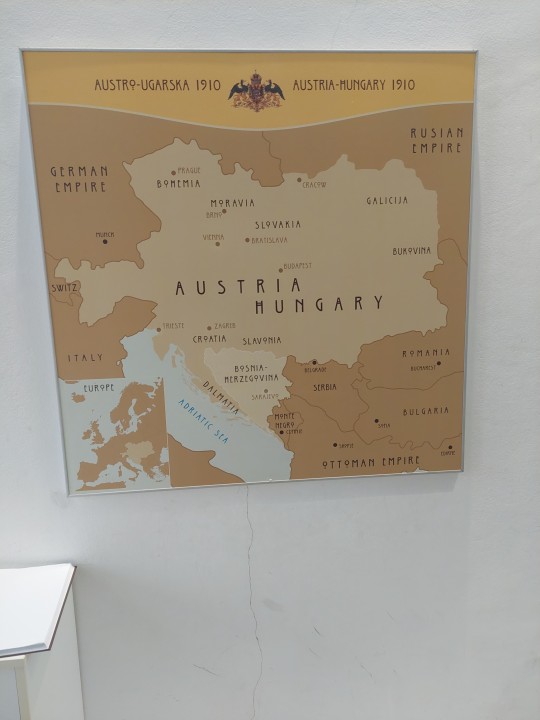
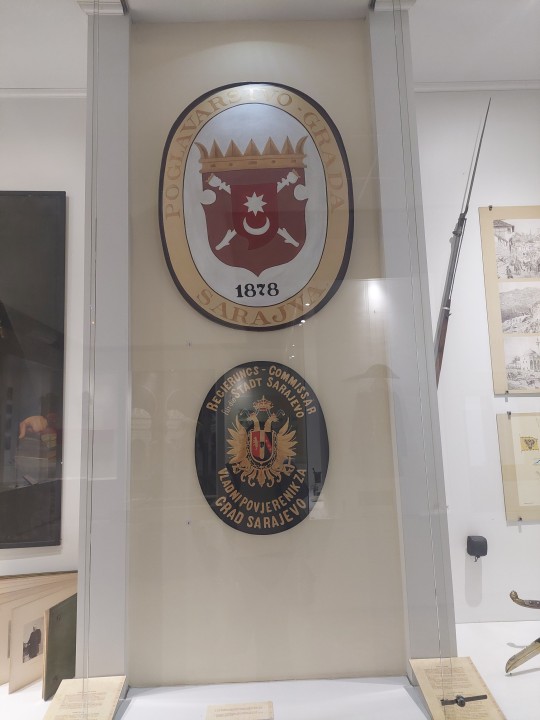
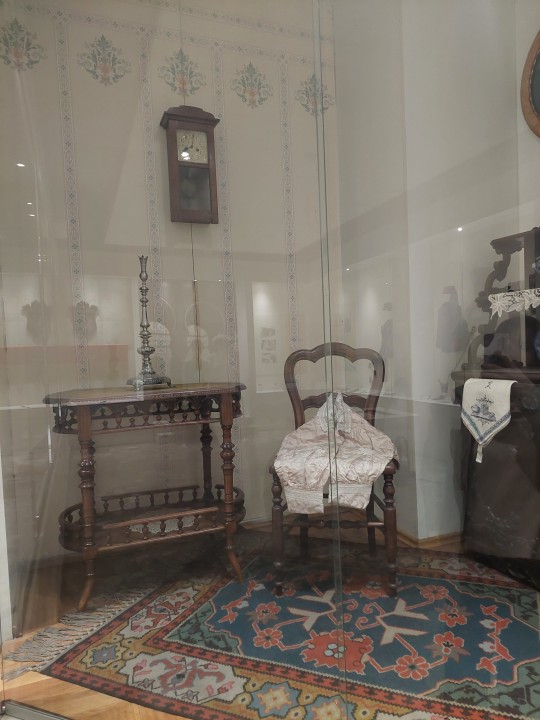

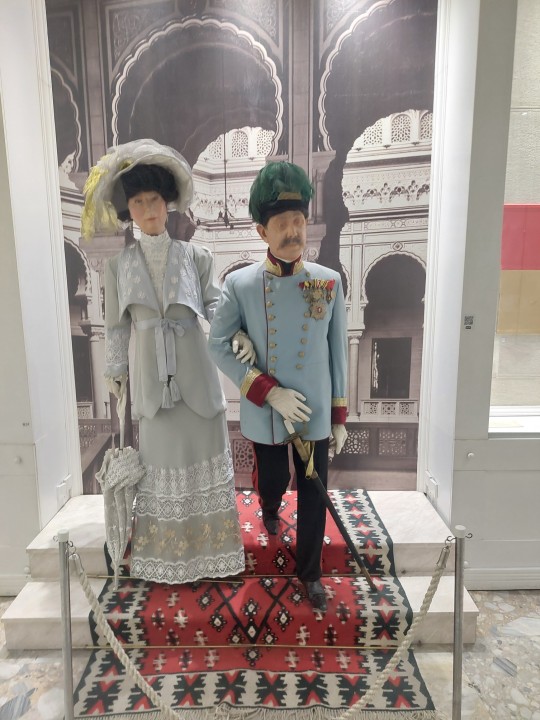


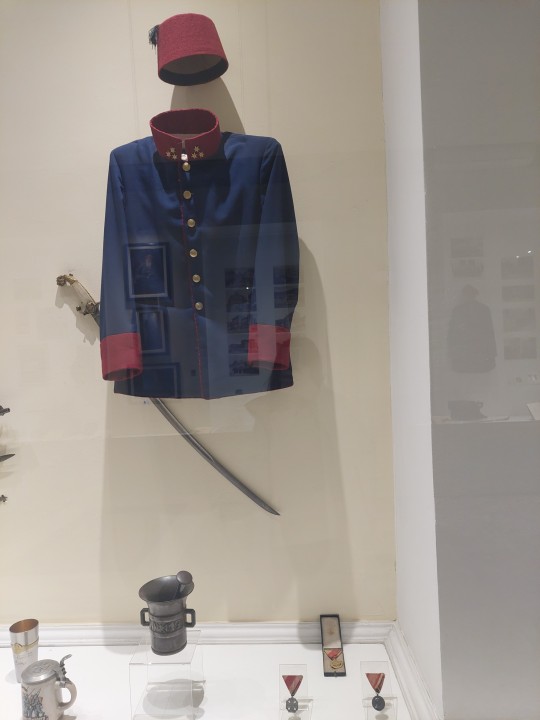


#bosnia#herzegovina#bosnia and herzegovina#history#bosna i hercegovina#sarajevo#sarajevo assassination#world war 1
10 notes
·
View notes
Text
I want to share with you something about the French reception of the attack on Israel. A little point which, I promise, will lead to a bigger and more general point.
And this little point is the reason why you will not see any French politician or public figure approve or applaud the actions of the Hamas, and why almost all of them are currently sharing opinions supporting Israel, and why the few that do not condemn the Hamas' actions are currently under big criticism.
Because in France there is a crime known as "apology of terrorism". It is quite simple: the law condemns and deems criminal any kind of public support or approval of terrorist organizations and terrorist attacks. This is the set of laws that, for example, prohibited French people from loudly screaming "Well done! This dirty criminal-government is getting its right justice and these deaths were perfectly justified!" when 9/11 happened. These are much needed law for France's current situation to fight back the rise of extreme Islam on the French territory, and to criminalize things such as people rejoicing at Samuel Paty's death. This is the same set of laws that currently prevent people from sharing any support of the Hamas.
Because, and this is something that NEEDS to be remembered and brought back in this whole talk: the Hamas is recognized by many countries as a terrorist organization. France recognizes it as terrorist, because France is part of the European Union which, as a whole, considers the Hamas terrorist ; and so does the United-States, and Canada, and Japan, and Paraguay... Even countries that do not recognize the entirety of the Hamas as terrorist (Great-Britain, Australia, New-Zeland, Egypt...) do recognize that it is semi-terrorist and that it has terrorist branches within it. And it isn't just countries and governments, oh no! People should also recall that many humanitarian organizations, AND many human rights organisms, have frequently and regularly denounced the crimes and the terrorist nature of the Hamas. Not against Israel, no - against the Palestinians themselves. Amnesty International, and the Palestinian Center for Human Rights, and Human Rights Watch, have all spoken against the Hamas, its immoral methods, and its crimes. Note something when people speak of condemning these attacks: people condemn the HAMAS, say the HAMAS should be punished. Nobody condemns Palestine, nobody says Palestinians should be punished - and that's because the Hamas is not Palestine in the eyes of these goverments - the same governments that recognize the Hamas as a terrorist organization refuse to see it as any kind of legitimate representative of Palestine.
Let's remember how for example in the very texts that founded the Hamas and in the Hamas very public ideology, there is a clear refusal of any kind of peace attempt with Israel - the organization was born with the sole goal to declare war on Israel, and with the dream to see Israel completely destroyed and all its inhabitants gone in one way or another ; and as a result they are known to have intimidated, captured, tortured and killed anyone they deemed as "allies" or "favorites" of Israel. This included the Hamas opposing in many different ways all attempts at peace treaties or negociations with Israel, and the Hamas capturing and torturing any Palestinian they deemed too leanient or too friendly or not aggressive enough with Israel, to the point Palestinians who were actually working on trying to change for the better Israel-Palestinian relationships had to leave Palestine due to how threatened they were.
Let's remember how the Hamas is a very openly antisemitic group, whose goals are clearly spelled out as a "jihad against the Jews" ; that deems one of the main problems of Israel's existence is its Jewishness ; who for decades have shared texts explaining that Muslims are the natural ennemies of the Jews, or that the Jews controlled the world medias with all the "money" they had, or that the Jews were secretly behind the French and Soviet Revolutions, and that WWII was actually organized by the Jews to amass an enormous amount of money. And that it is only very recently, and because they clearly needed to "look clean", that they decided to adopt views such as "We don't have problems with Jews in Europe or America, just those in our region" and "Maybe the Holocaust did happen and was bad - but we want to do our own thing, so it's good, since we're not Nazis". Even in their sentences saying that a peaceful cohabitation between the three religions of the book was possible, they insist that such a peace is only possible as long as Islam is recognized as the most important and superior religion, under which the others could live in peace.
Let's recall all the testimonies of Palestinians who lived in fear of the Hamas, and dreaded receiving a bullet in the leg or in the head because they would accused of "collaborating" with Israel. Let's recall the accusations of the Hamas participating in the human-trafficking rings at work in north-east Africa. Ismaël Haniyeh has declared that Ben Laden was a "holy warrior of Islam" and that his death made him a Muslim martyr - confirming what everybody knew already, that the Hamas and Al-Qaïda had relationships with each other. In 2012 Sahar El-Mougy already denounced that the Hamas, which started as a resistance movement against the Israelian oppresor, had turned into the new oppresor of Palestine and into a fanatical religious group that erased Palestinian culture by censoring or destroying its arts, literature and cinema, to enforce exclusively religious works.
All in all: the Hamas is bad for Palestine, and the Hamas is bad, and that's it. This isn't the fact that "Israel was attacked" which is the true problem and core of the debate here - here the situation is "the HAMAS attacked Israel". No matter what Israel did in the past, or how far-right it might be, or how half of the Israelian population is against its current leader, or anything else - if we just take the present situation, in the eyes of the law and the government of many of those countries, it boils down to, "A terrorist group attacks a democratic government. We thus have to stand by the democracy's side, no matter if we actually like the democracy in question, out of principle, because we, as nations fighting against terrorism on our own grounds, cannot support a terrorist group".
So, maybe to many of you it seems "unfair" or "hypocrite" or "vile" to not be "Let's have Israel destroyed", but the situation is that these countries are not going to support an antisemitic, religiously-extremist, terrorist group that has been known to commit human rights crime against its own people.
18 notes
·
View notes
